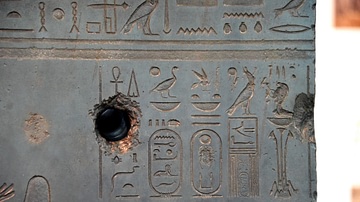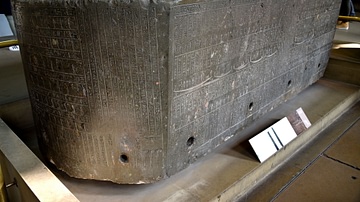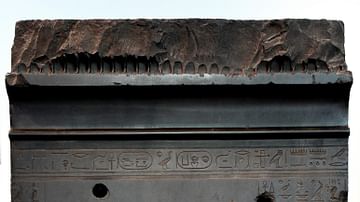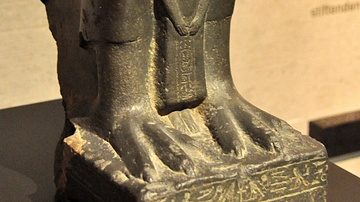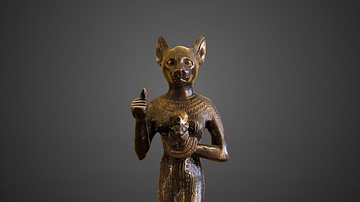Illustration
This head was part of a statue which was placed in a temple. No inscription survives to identify the king, but stylistic details point to Nectanebo I or II, the principal kings of Egypt's last native Dynasty. The king's nose and protective cobra on his forehead was destroyed to curse him. Perhaps this vengeful act occurred when Egypt, after 60 years of independence, was reconquered by Persians (31st Dynasty). A new nose and cobra were later fitted in prepared slots. This may have happened soon after Alexander the Great had conquered the Persian Empire, under the early Ptolemies. To bolster their title to Egypt's throne, they restored, renewed, and imitated the monuments of the their predecessors. Originally the wings of the head-cloth displayed the usual horizontal pleats, but these were rubbed down, presumably when the statue was repaired. Many of the Ptolemies' own statues have stripeless head-clothes. 30th Dynasty, 380-343 BCE. Collected by Charles Townley, probably in Rome; origin in Egypt unknown. (The British Museum, London).
About the Author
Cite This Work
APA Style
Amin, O. S. M. (2016, July 18). Head of King Nectanebo I or II. World History Encyclopedia. Retrieved from https://www.worldhistory.org/image/5356/head-of-king-nectanebo-i-or-ii/
Chicago Style
Amin, Osama Shukir Muhammed. "Head of King Nectanebo I or II." World History Encyclopedia. Last modified July 18, 2016. https://www.worldhistory.org/image/5356/head-of-king-nectanebo-i-or-ii/.
MLA Style
Amin, Osama Shukir Muhammed. "Head of King Nectanebo I or II." World History Encyclopedia. World History Encyclopedia, 18 Jul 2016. Web. 13 Apr 2025.



